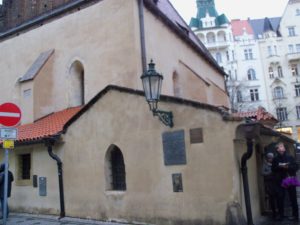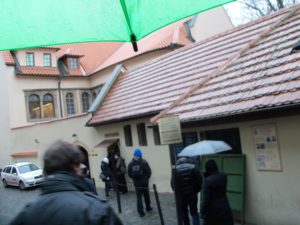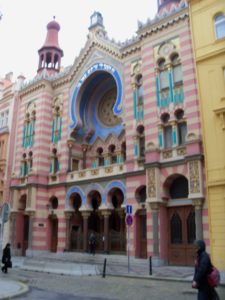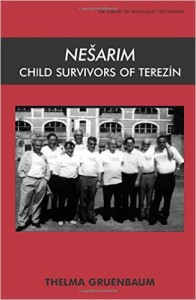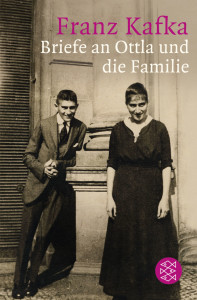I was recently in contact with the great-grandson of an elderly couple who were sent to Terezin in 1942. I learned that this couple, Jakob and Berta Weinshenk, were from Nuremberg, Germany and they were sent to Terezin on September 10, 1942. Jakob died about six months after arriving at Terezin, but incredibly Berta managed to survive the war. She celebrated her 75th birthday in the camp and her friends wrote her a special birthday poem on a piece of cardboard, which survived. The poem celebrates Berta’s bravery and expresses the wish that Berta would live a long life surrounded by her children and grandchildren. The full text of the poem can be found here:
http://www.israel-travel.co.il/uncategorized/a-birthday-in-terezin/
The story of Berta’s deliverance from Terezin is an incredible one. In 1945, the Nazis announced that a transport was being arranged to Switzerland and asked for volunteers. Berta did not believe them, but feeling she had nothing left to live for she volunteered. Unlike all the other trains leaving Terezin, this one actually did arrive in Switzerland in February 1945. Berta was later reunited with her daughter Chana, whose family had immigrated to the United States before the war. Her older daughter, Pauline, also survived the war in France, but her son Martin was murdered in Auschwitz. Berta lived with her family in the United States until her death at age 95.
There is another story about Berta that is recounted in an exhibition at Yad Vashem. There is a matzah cover, white and fringed with a salmon colored border, bearing the stamp of a Jewish home for the elderly in Vienna. It is unknown how or when Berta acquired this matzah cover, but she kept it safe during her imprisonment in Terezin and after she died it was donated to Yad Vashem by her surviving relatives. Below is the full story as recounted on the Vad Vashem website:
http://www.yadvashem.org/yv/en/exhibitions/passover/matzah-cover-weinschenk.asp
